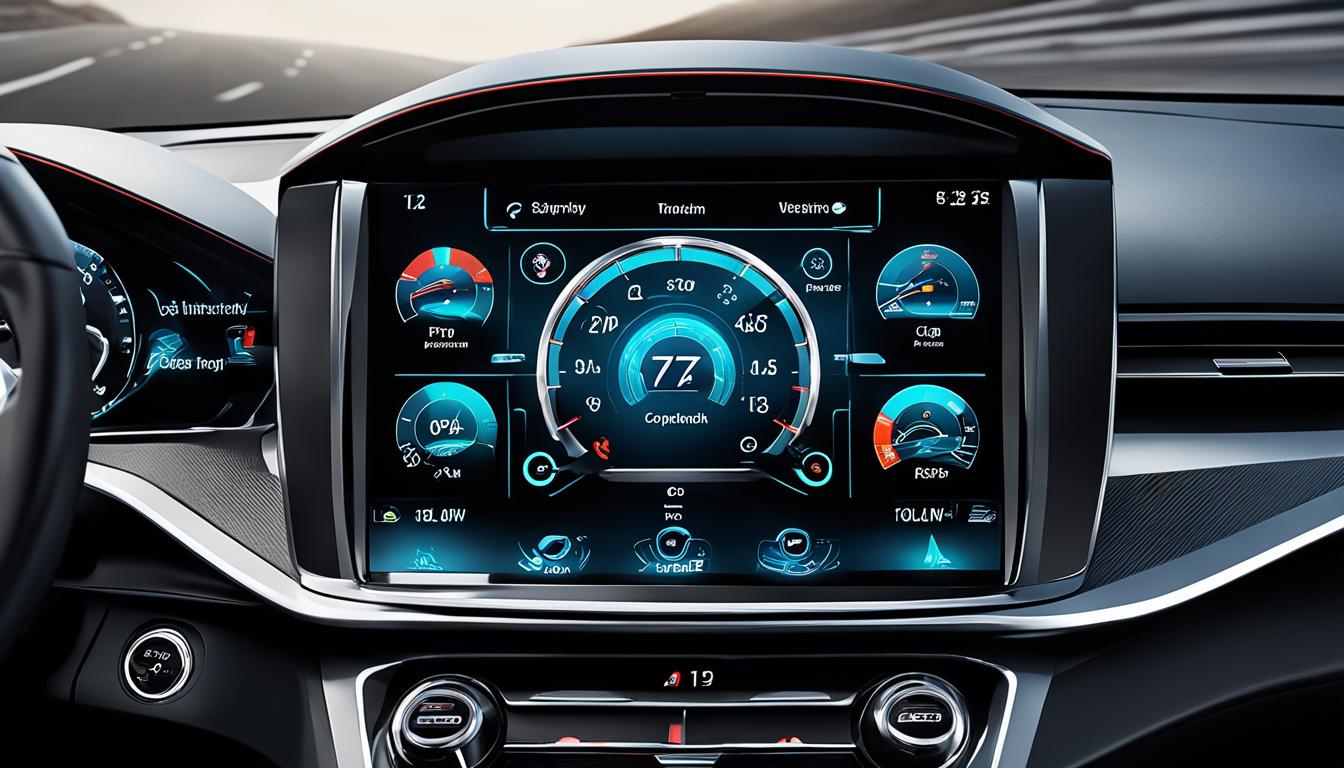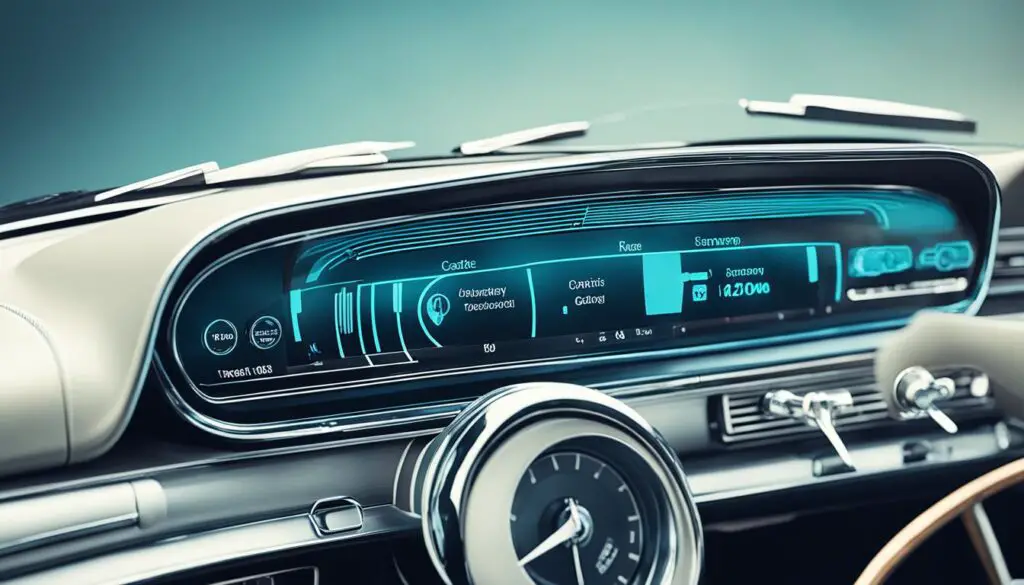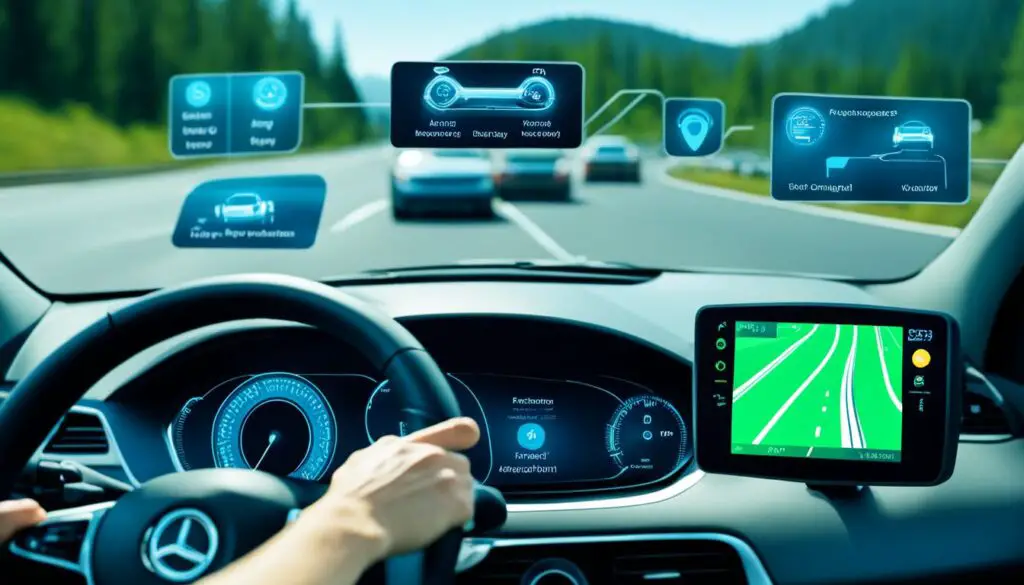
Navigating Car Systems: Technology at Your Fingertips
Car systems have revolutionized the way we drive, enhancing the overall driving experience, improving safety, and providing seamless connectivity on the road. With advancements in technology, vehicles now come equipped with sophisticated infotainment systems and driver assistance features that make driving more convenient and enjoyable. In this article, I will delve into the latest advancements in car systems and how they are transforming our relationship with automobiles.
Key Takeaways:
- Car systems have evolved to include advanced infotainment and connectivity features.
- Driver assistance technologies such as lane keep assist and adaptive cruise control enhance safety on the road.
- Collision avoidance systems and blind spot detection help to prevent accidents and reduce risks.
- The future of car systems looks promising with the advancements in autonomous driving and electric vehicles.
- Connected cars enable real-time traffic updates and improved safety measures.
The Evolution of Car Systems
Over the years, car systems have undergone a remarkable transformation thanks to technological advancements. Today, vehicles are equipped with sophisticated infotainment systems that integrate seamlessly with smartphones, offering drivers a wide range of connectivity features right at their fingertips.
One notable evolution in car systems is the integration of advanced infotainment systems. These systems allow drivers to access navigation, music, and other applications directly from the dashboard, providing a seamless and convenient driving experience. With just a few taps, drivers can control their favorite apps and stay connected while on the road.
Moreover, technological advancements have given rise to advanced driver assistance systems (ADAS), enhancing safety and convenience. These systems utilize sensors and cameras to provide features such as lane keep assist, adaptive cruise control, and automatic emergency braking. ADAS not only assist drivers in maneuvering their vehicles but also contribute to mitigating potential hazards on the road.
With the evolution of car systems, drivers now have access to a plethora of connectivity features, making their driving experience more enjoyable and productive. Whether it’s streaming music, making hands-free calls, or accessing navigation services, these systems enable drivers to stay connected without compromising their safety.
As the technology continues to evolve, car systems are expected to become even more advanced, paving the way for future developments such as autonomous driving and connected cars. The future holds exciting possibilities for car systems, ushering in a new era of safer, more efficient, and connected driving.

Advancements in Car Systems
| Advancement | Description |
|---|---|
| Infotainment systems | Sophisticated systems that provide seamless connectivity with smartphones, allowing easy access to navigation, music, and other apps from the dashboard. |
| Advanced Driver Assistance Systems (ADAS) | Utilizes sensors and cameras to offer features like lane keep assist, adaptive cruise control, and automatic emergency braking, enhancing safety and convenience. |
| Connectivity features | Allows drivers to stay connected on the road, enabling hands-free calls, streaming music, and access to navigation services. |
Enhancing Safety on the Road
When it comes to driving, safety is of paramount importance. Car systems have made significant advancements in recent years, incorporating innovative features that aim to enhance safety on the road. These safety features utilize cutting-edge technologies such as sensors and cameras to provide an extra layer of protection for both drivers and pedestrians.
One of the key safety features in modern car systems is collision avoidance. By leveraging sensors and cameras, these systems can detect potential hazards and alert drivers in real-time. In some cases, they can even autonomously apply emergency braking to prevent accidents. This feature has proven to be immensely valuable in mitigating the risks associated with distracted driving and sudden obstacles on the road.
Another crucial safety feature is blind spot detection. This technology helps drivers become aware of vehicles that may be lurking in their blind spots, significantly reducing the possibility of side collisions during lane changes or turns. The system alerts drivers through visual or audio signals, providing an extra measure of confidence and peace of mind.
Pedestrian detection is yet another remarkable safety feature integrated into modern car systems. This advanced technology uses sensors and cameras to identify pedestrians on the road and detect potential collisions. When pedestrian presence is detected, the system can automatically apply the brakes to avoid or minimize the impact of an accident. By prioritizing pedestrian safety, car systems are playing a crucial role in minimizing accidents and safeguarding vulnerable road users.
Car systems have made significant strides in improving road safety by incorporating features such as collision avoidance, blind spot detection, and pedestrian detection. These technologies leverage sensors and cameras to provide drivers with timely warnings and automated braking, reducing the risk of accidents and saving lives.
As safety becomes an increasingly important aspect of the driving experience, car manufacturers are prioritizing the integration of these advanced safety features into their vehicles. Many new models now come equipped with collision avoidance, blind spot detection, and pedestrian detection as standard features, highlighting the industry’s commitment to making roads safer for everyone.
By integrating these safety features into car systems, drivers can enjoy a more secure and confident driving experience. With technology as a powerful ally, road accidents can be significantly reduced, fostering a safer environment for all road users.

The Benefits of Enhanced Safety Features:
- Reduces the risk of accidents caused by driver distraction
- Provides timely warnings to alert drivers about potential hazards
- Enables automated braking to avoid or minimize the impact of collisions
- Improves awareness of vehicles in blind spots, reducing the risk of side collisions
- Prioritizes pedestrian safety, minimizing the impact of accidents involving pedestrians
The Future of Car Systems
The future of car systems is set to revolutionize the way we drive, with exciting advancements in autonomous driving, electric vehicles, and connected cars on the horizon.
Autonomous driving technology is rapidly progressing, paving the way for a future where cars are capable of navigating on their own. Self-driving vehicles hold the promise of safer roads, increased efficiency, and reduced congestion. As car systems continue to evolve, we can expect to see more advanced driver assistance features and fully autonomous vehicles becoming a common sight on our streets.
Electric vehicles (EVs) are gaining popularity with their zero-emission capabilities, and car systems are being designed to optimize their performance. From sophisticated battery management systems that enhance battery life to faster and more convenient charging solutions, EVs are poised to play a significant role in the future of transportation.
Furthermore, the concept of connected cars is gaining traction as vehicles become more integrated with the digital world. Connected cars enable real-time communication between vehicles and infrastructure, allowing for enhanced safety measures and improved traffic management. With the ability to share data and receive updates on road conditions, connected car systems will provide drivers with unprecedented control and convenience.
As we look ahead, the future of car systems holds immense potential. From autonomous driving to electric vehicles and connected cars, these advancements will shape the way we travel, making our roads safer, greener, and more connected than ever before.
FAQ
What are car systems?
Car systems refer to the various technological advancements integrated into vehicles to enhance the driving experience, improve safety, and provide connectivity on the road.
What features are included in car systems?
Car systems include advanced infotainment systems that offer seamless connectivity with smartphones, allowing drivers to access navigation, music, and other apps from the car’s dashboard. They also include driver assistance features such as lane keep assist, adaptive cruise control, and automatic emergency braking.
How do car systems improve safety on the road?
Car systems improve safety by offering features such as collision avoidance systems that use sensors and cameras to detect potential hazards and alert drivers or apply emergency braking. They also include blind spot detection systems that warn drivers of vehicles in their blind spots and can even detect pedestrians and automatically apply the brakes if necessary.
What does the future hold for car systems?
The future of car systems is promising with advancements in autonomous driving technology, making cars more capable of navigating on their own. Electric vehicles are also gaining popularity, with car systems being designed to optimize battery life and charging efficiency. Additionally, the concept of connected cars is gaining traction, enabling vehicles to communicate with each other and with infrastructure for real-time traffic updates and enhanced safety measures.
Source Links
- https://www.linkedin.com/posts/mattmatros_sba-founder-smallbusiness-activity-7162430895063289856-EJIW
- https://www.nbcnews.com/business/economy/super-bowl-fans-are-flooding-vegas-cash-dont-bet-big-windfall-workers-rcna137557
- https://www.cnbc.com/2024/02/11/berkshire-hathaway-topped-600000-a-share-last-week-aiming-at-1-trillion-market-value-.html
